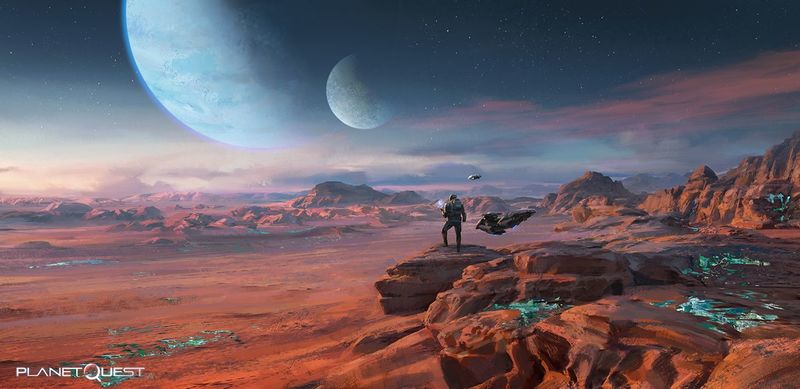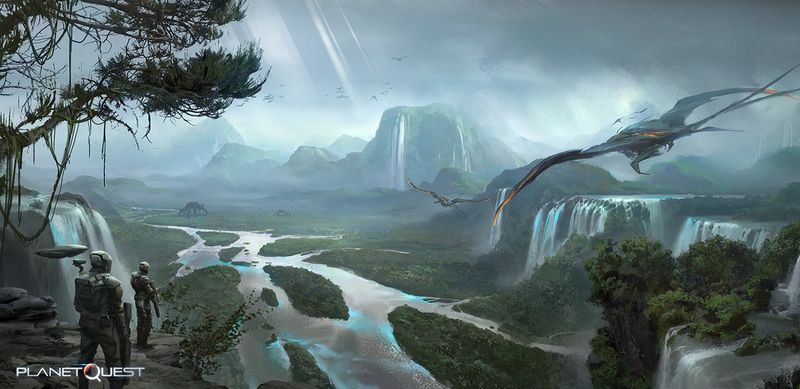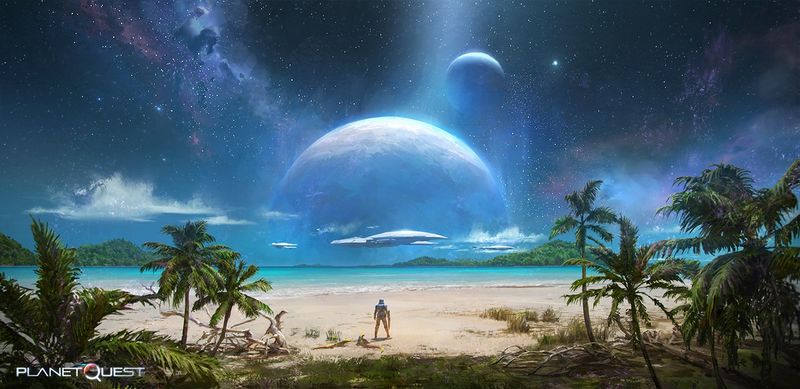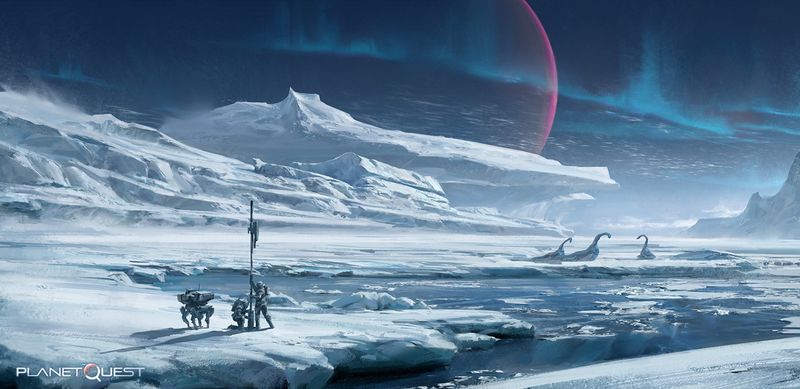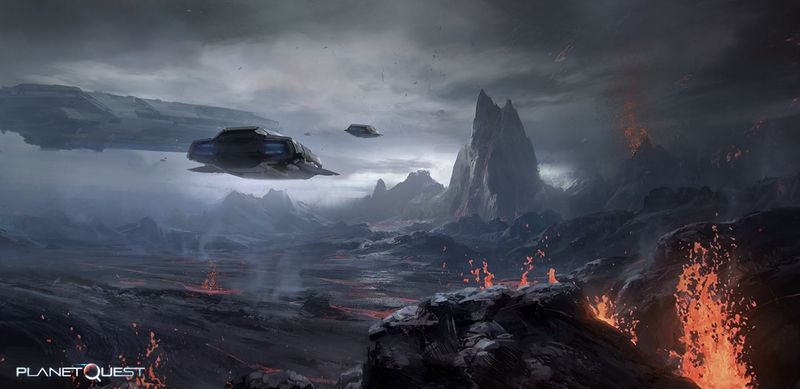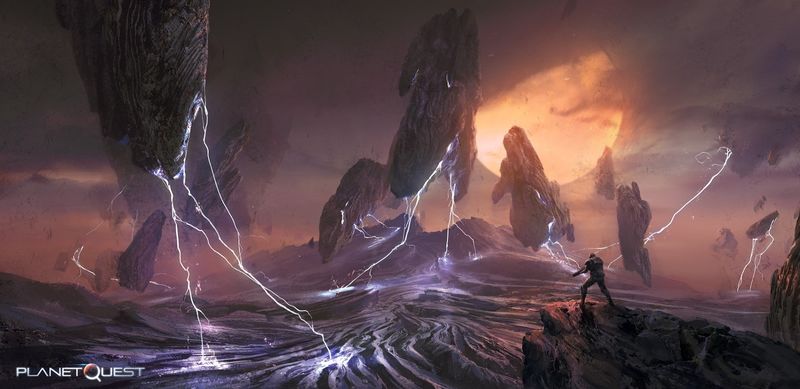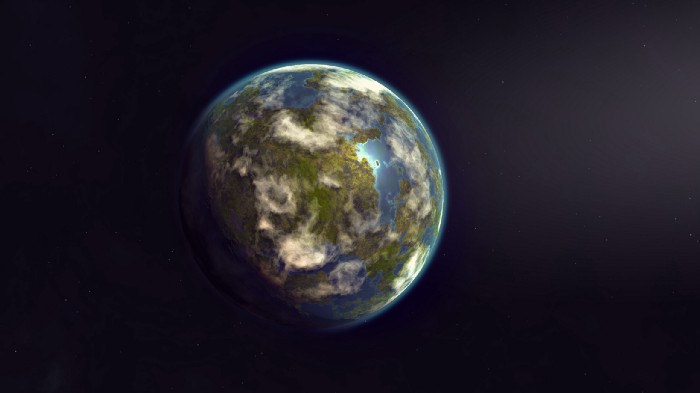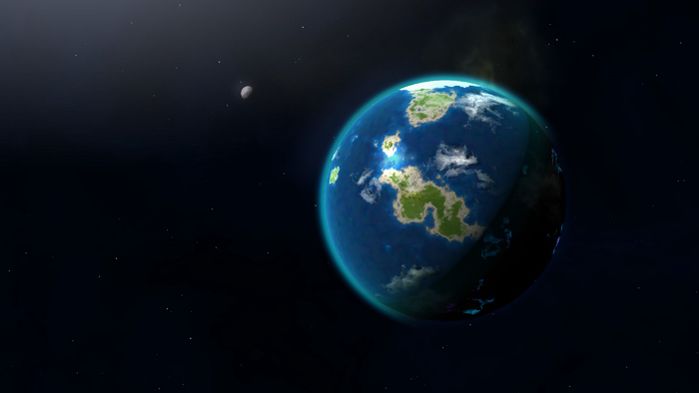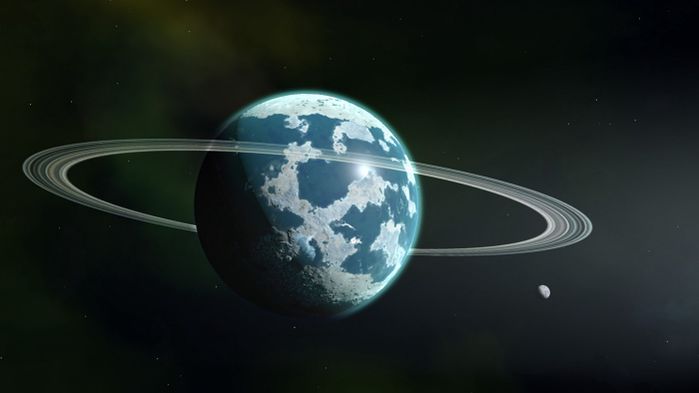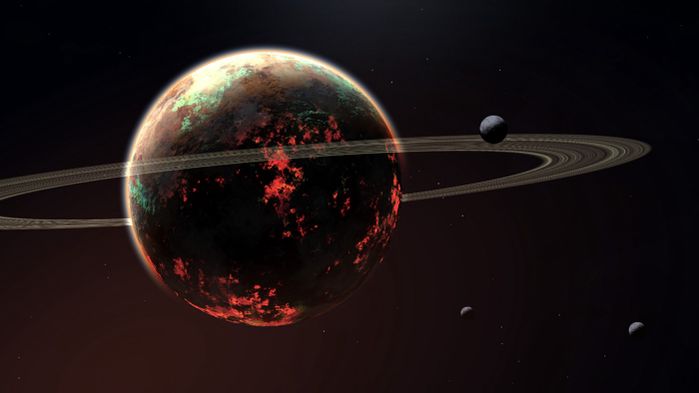Planets
About Planets
The core gameplay in PlanetQuest takes place on the surface of both owned and unowned planets, all uniquely generated based on cutting edge procedural technology. Planets have different traits and rarities, which gives them each their own identity and unique value.
Owned planets are represented by an NFT and always belong to a specific faction, they offer a great opportunity for cooperative gameplay as only members of that faction are allowed to make their way to the planet surface. Unowned planets, on the other hand, set the stage for versus gameplay.
With no recognized sovereignty of any faction, players from all factions can take on missions on these planets, risking an all-out confrontation with one, or two of the other factions, but in turn offering them greater rewards for their efforts. With players needing a home planet to play the game, planet owners quite literally hold the key to our universe and the community selects its own players.
The community, previously heard that our gameplay will happen on the planet's surface. This surface will also be generated procedurally like our planets. And this procedurally generated surface will follow the characteristics of the planet itself. If we are landing on a desert planet, we will see dunes, dust storms, and rocky cliffs. Our procedurally generated game area will contain forest elements like a jungle, swamps, or bushes if we are on a forest planet.Planets will have the ability to host 30 players as their "home planet".
All of these planets produce a certain level of Quantum. And there is a big difference between a common and legendary planet. Common planets will be providing a nice stream Quantum to maybe help bolster your "armory" and stock up some weaponry. All of the additional Quantum generated on the common planets will be like a bonus to your in-game value-generating activities. As we go up on the rarity, some of the Quantum generated by the planet comes from the global Quantum generation of the entire player base. This ratio will be higher for each increased tier. But for example, on legendary planets, most of the Quantum generated on the planet will come from the global pool and make them great planets to own.
There will be ways to differentiate our planets from other planets. As a planet owner, we will be able to put our unused or available gear to our "Amory" so other players can lend or borrow from us. But for example, we could limit that availability to the players living on my planet. When other players check the armories on our planets, they can decide which planets they want to join. Also, we will be able to manage this availability by player's Quantum score.
When the Planet Sale kicks off in May, we will be able to see our planets in our browsers with full 3D. Team is currently focusing on planet generation and surface generation capabilities of the Genesis Engine.
Planets as an important part of economic model
As it was mentioned earlier all planets are represented by an NFT, so they have a really important place in the PlanetQuest economic model.
To reward the community and to give them more fun from the game process PlanetQuest introduced Planet NFTs that generate a steady stream of PQX for their owners. For planet owners, this income depends on the activity and success of the players they offer a home on their planet, along with the rarity of their planet. This means, no matter the exact number of active players, planet owners who are doing a great job, will always be able to count on a steady stream of income.
Before early access in 2023, PQ team will distribute no more than 3 galaxies of planets, including those earned through passport rewards. In each of these galaxies, there are:
Planet spread: Current expected numbers: 35% desert, 27.5% forest, 20% tropical, 7.5% ice, 7.5% volcanic, 2.5% strange.
For the keen observer, you’ll note the above breakdown not only reveals pricing, but also the weight value for each of the planet tiers. Although planets depend on players joining them and playing to generate $PQX, the amount of $PQX they produce will generally be relative to their weight, which means a Legendary planet will typically generate 50x more $PQX than a common one. In other words, a single Legendary planet can be expected to generate roughly 100 / 19,800 = 0.505% of all the $PQX produced by Planet NFTs within its galaxy, while a rare planet produces only 8 / 19,800 = 0.04%.
This means that if the total $PQX production of a galaxy is 2.5M $PQX per month, a legendary planet would likely produce 5,050 $PQX per month, or 60,606 $PQX per year, as shown in the example below:
New planets are offered for sale as existing ones fill up with players, making sure there is always enough planets for new players to find a home. Should player count drop, planet owners are incentivized to recruit new players to shore up their earnings, or may (in future), be given the option to crack empty planets, for a one-time lump sum of Quantum, burning the NFT in the process.
Planets' classes
There are 6 classes of planets:
→ The Desert Planet
→ The Forest Planet
"Planet class that draws distinct natural elements from our own home"
This planet captures the familiarity of woodlands yet feels distinctly foreign in its remnants of ruins and looming overgrowth. Venturing deeper, Explorers may experience rumbles of waterfalls against rocks aged by years of weathering and erosion. There is an air of uncertainty with human instincts hesitating between the cusp of discovery hidden by thickening ranges of forestry. God-like redwood trees constricted by overgrown vines grant an almost omniscient protection from creatures which haven’t seen the light of day. Here, creatures are also forced to thrive under large canopies, metamorphosing to the serene harshness from the lack of light and shadows threatening their path. The Forest Planet holds secrets in its markings on trees and gaps of darkness waiting to be unveiled by chosen Explorers.
→ The Tropical Planet
"A new planet class that draws from the summer paradise of our own home"
This planet encapsulates the horizons where the ocean embraces the sky. Saturated hues and vibrant overtones nurture a veiled serenity, protected by an eternal sunset. A reminiscent landscape of Earth’s summer paradise maintains low architectural views overshadowed by streaks of water-colored blue. Here lies utopia; almost too perfect, a fantastical mirage where Explorers question if the calm masks deeper chaos.
An expanse of sand provides the breeding grounds for estranged flora altered by remnants of alien civilizations and quantum. Ancient dwellings provide the rare shadows observable by the human eye, surrounded by unending plains of familiar yet foreign wildlife.
Contrastingly, a teal tinted ocean resides near, with the crash of waves piercing an eerie silence whilst the atmosphere remains ominously still. The scattering of jade-like bioluminescent light throughout hallmarks this planet, evoking dreamlike hypnosis lulling those towards the ocean. This light; a surreal yet harmonious spectrum of blue-green shimmering engulfs this planet with a sea of vivid ocean stars. Here, lie creatures concealed by the shallow ocean floors, featuring a disjointed arrangement of fins and gills — adaptations as a by-product of a supposed paradise. Shallow waters have thriving coral life with pastel tints, beckoning Explorers through their enticing sheen. Trudging deeper from this temptation leads to deeper ocean floors imposing a menacing threat, inaccessible to Explorers despite the allure of bioluminescent scattering.
The Tropical Planet holds secrets in the open, ephemeral treasures waiting to be discovered.
→ The Ice Planet
"A new planet class that draws its beauty from the arctic wilderness"
Upon arrival, Explorers will be greeted by a luminescent sky permeated by an aurora, its striking, pure light betraying the innocence and clarity behind the planet’s frigid wastes. Snow disturbances on this planet have shaped mythical ice structures across eons, with an intention too purposeful to be natural, yet too sophisticated to be human. These intricate and aged sculptures are framed by a wall of almost never-ending glaciers; a stage set, frozen in time, ever waiting for its players to resume their positions.
Yet beneath this beauty, an absence of warmth permeates the surface, concealing the flora and fauna beneath a transient snowfall. Scattered amongst this pale blanket is a fleeting glow, its light scattering just below the ice sheets; is this a treasure yet to be discovered, or do terrible dangers lurk in the deep? To Explorers, however, these terrors are a mere trifle, and the treasures of the ice are more than enough to tempt them to brave its surface.
As one ventures deeper into the Ice Planet’s storm, the air softens, each breath more revitalizing than the next. Here, panoramic views are painted by sculpted ice crystals, the planet’s history etched into their sleek, eroded edges. Countless unknown creatures roam these wastes, physically adapting to a climate far removed from our own. Above and below, thin refractions of light illuminate the path of the would-be Explorer, beckoning them deeper into the unknown.
The Ice Planet is home to a vivid, evocative landscape, its raw beauty concealing secrets underneath layers of shifting snowfall, waiting to be uncovered.
→ The Volcanic Planet
"A new planet class, one dominated by sprawling oceans of lava, adventure, and opportunity"
Pierce the veil of smoke that pours forth from the planet’s surface and what is revealed is a fiery panorama. This is no place for punishment, however; the light of opportunity shines brightly on Explorers who call this planet home.
The planet’s crust is covered by gurgling oceans of lava, broken up by island formations of igneous rock and jagged mountaintops. This is a young planet, shined on by a young sun. To this day, massive changes in its topography take place over decades and centuries. These do not take from the scorching beauty at display but add to it — the Volcanic Planet is a living, breathing organism, with its own complex biosphere.
Standing atop obsidian-like mountains reveals a spectacle in motion below. To see the lava up this close is sublime, at once beautiful and awe-inspiring. To tread the planet is to embody the spirit of adventure, to welcome risk in search of great reward — to embrace the role of Explorer in full.
Life on the surface promotes the sturdiest of beings. Many of the planet’s native inhabitants are specialized in surviving the extreme heat and have evolved into true silicon-based lifeforms. Entombed in rock-like carcasses, beings great and small flitter back and forth across this landscape. Explorers observing them long enough might catch sight of veins of precious Quantum pulsing over those obsidian shells. Yet other organisms take to the skies on heavy-set wings covered with a viscous membrane.
The Volcanic Planet is rich in resources, awaiting exploitation by the industrious and enterprising. Further yet, stable cavern systems and formations on the surface give off a faint power signature, whose origins correspond to ancient alien technology encountered across the galaxy. What artifacts might yet be discovered? What riches await those willing to brave the secrets of the Volcanic Planet?
→ The Strange Planet
"Our final, most enigmatic planet class — The Strange Planet."
Nothing is as you expect it to be — not on this world. It is bathed in its sun’s rays, but the atmosphere refracts the light in ways that defy understanding. This phenomenon often turns what should be bright days on the ground into twilight. Night comes alive with its own peculiar spectacles of darkness and shadow; to spend a single rotation here is to see such breathtaking sights as no other planet offers. But the properties of light are the first of many hints that the laws of physics don’t work here as they do elsewhere.
A few steps on the planet’s surface are enough to confirm this suspicion. Gravitational force itself is not consistent — a flash of static electricity is all the warning Explorers might get before Earth-like gravity gives way. While they can look after themselves, nature has no such defenses. Boulders float mid-air over grass-like vegetation in sharp neon colors; both the flora and these blocks of stone lay suspended in patterns at once nonsensical and intentional. Indigenous life, too, is patterned in such a way — to look at is to experience the bizarre while appreciating the endless variety of life across the galaxy. Is this proof of adaptation to ever-changeable environmental conditions, or the touch of some intelligent design?
This is true for all the planet — it is constant only in its inconstancy. Explorers might step into a crevice and find themselves sliding down an ice tundra and further down yet, into a cave simmering with magma; what looks like barren wastelands can come alive with electromagnetic storms and other aberrant phenomena. There is no end to the variety the Strange Planet provides, and no end to its potential, either. No world is as enigmatic as this one…and as far as the intrepid Explorer is concerned, with mystery comes the promise of richest bounty. Who else is to say what amounts of Quantum, what long-forgotten alien artifacts are hidden away on this uncanny world?
The Strange Planet is the most unusual of all planet types, one full of paradoxes to make sense of and sights to behold. Our team aims to make this an extraordinary environment for all of you to explore.
Planet Naming
For example, a planet named Darwin-Phi-20B
Darwin - Galaxy
Phi - Constellation
20 - system
B - Planet
Different benefits between Planet Class
Planet spread in term of minting: Current expected numbers: 35% desert, 27.5% forest, 20% tropical, 7.5% ice, 7.5% volcanic, 2.5% strange.
Team is also working on having the kind of missions you can partake in on planets be dependent on the planet class. Consequently, as Strange Planets are more rare than Desert Planets, one of the cool benefits of owning a Strange Planet could be that drawing players to your Planet might be easier. People probably want to explore different kinds of missions, and you hold more exclusive ones!
Rarities of the planets
Each planet class is also sub-divided by rarity. There are five types of rarities.
→ A Common Planet type
Ideal for the casual player that wants to own their own planet. Invite your friends to play with you, or watch as new players flock in to fill up your planet and earn some extra Quantum to power your PlanetQuest adventures. The common planet is the normal planet without any additional features. Example is below.
→ A Rare Planet type
Perfect for groups of casual players that want a step up from a Common Planet. Provides both the owner of the Planet and the players, who are invited to make it their home, with Quantum bonuses to help them build out their gear and brave unknown worlds. This planet type is featured with one moon. Typical Rare Planet is below.
→ An Epic Planet type
Great for more serious players and Planet owners who want to give skilled players a home. Produces a sizable amount of Quantum for the Planet owner as well as offering Quantum bonuses for the players that join it, making it a highly desirable home among the stars. This planet type is featured with one moon and a ring. Below you will find typical example of the Epic Planet.
→ A Legendary Planet type
Perfect for Guilds and those looking to be a top Planet owner. Legendary Planets are extremely rare and generate enough Quantum for their owner to establish a small stellar empire, along with some of the highest Quantum bonuses for players lucky enough to get to call them home. This planet type is featured with three moons and a ring. Example of Legendary Planet:
→ Mythical Planet type
Mythical planets will be extremely rare. In fact, there will be only 3 Mythical planets for an entire galaxy. Those will not be available for sale, but we might see them auctioned in famous places around the world. We won't be able to create or upgrade them via artifacts. Instead, they will be generated specially and signed by Jon McCoy and will have unique properties.
Higher tiered Planets offer bigger bonuses for players as well, an additional benefit of having a highly tiered Planet is that you draw in more skilled players! And of course, having more players who play often and your planet being more attractive to high tier guilds is a great thing for a Planet Owner.
Planet Characteristics
There are 5 characteristics on planets:
→ Flora
From barren plains to thick, alien jungles and everything in between, each planet has its own Flora, offering players a unique atmosphere and gameplay experience. Soon we'll be giving you a first look at vegetation on the planet surface and all there is to discover there.
→ Fauna
Wildlife in PlanetQuest is wildly varied, from the generally friendly and playful Qyillits to massive Reapers best left undisturbed. Each planet offers a broad variety of wildlife to discover, which will play a big part in your adventures.
→ Nebulae
Each constellation in PlanetQuest has its own rich nebular tapestry as a cosmic background; these multi-coloured veils of gas, clouds, and dust exist in countless different shapes and colors, some of which exceedingly rare.
→ Moons
Planets can have up to 3 moons, more commonly linked to higher tier Planets, these mysterious companions serve as an indicator of the Planet’s rarity as well as a source of potential natural resources well beyond the Planet surface.
→ Rings
Only the highest Planet tiers are adorned with these ornate, celestial decorations. The remnants of what were once moons, or even small Planets that have been smashed to bits, are an echo of the Planet’s storied history and may contain valuable resources.
Planet Sale
In the first half of May, we will have our planet sale event. But this community planet sale event won't be a first-come, first-serve. Instead, PQ team will screen every application to ensure planets will go to our community members. Team wants everyone in the community to have equal chances and don't want to make bots or whales happy. Instead, PQ team want to give priority to our community.
There will be a registration phase for the community planet sale where you can enter your personal details and write a paragraph or two to show your interest and commitment. Along with this information, there will be other factors like your Passport points, commendations, vote amount, insignia amount and rarity, recruits, and other things that will help your "total score" to buy a planet. This process will continue until the end of May.
After the application phase is completed, team will contact each community member who successfully passes the evaluation period via e-mail. Of course, this might take a while, depending on the application amount.


